The inaugural RAC Rally in 1932 challenged competitors to reach Torquay from any one of nine starting points around Britain. Sounds easy? We find out
The 11 March 1932 issue of Autocar – perhaps you remember it, in which case, well done you – allowed itself more than a little self-congratulation.
"We, of The Autocar," it began, grandly, "can look back on the Torquay Rally with justifiable satisfaction." Can you, indeed? "From the moment we suggested to the Royal Automobile Club" (oh, I see where this is going) "that it should organise the event" (I getcha) "we felt certain that the Rally would be not only a great and successful competition in itself" (righto) "but also a far-flung advertisement for British motoring and English resorts."
I suppose one should admire the chutzpah: suggest something, let somebody else do the work and congratulate yourself on a job well done when it all happens to plan.
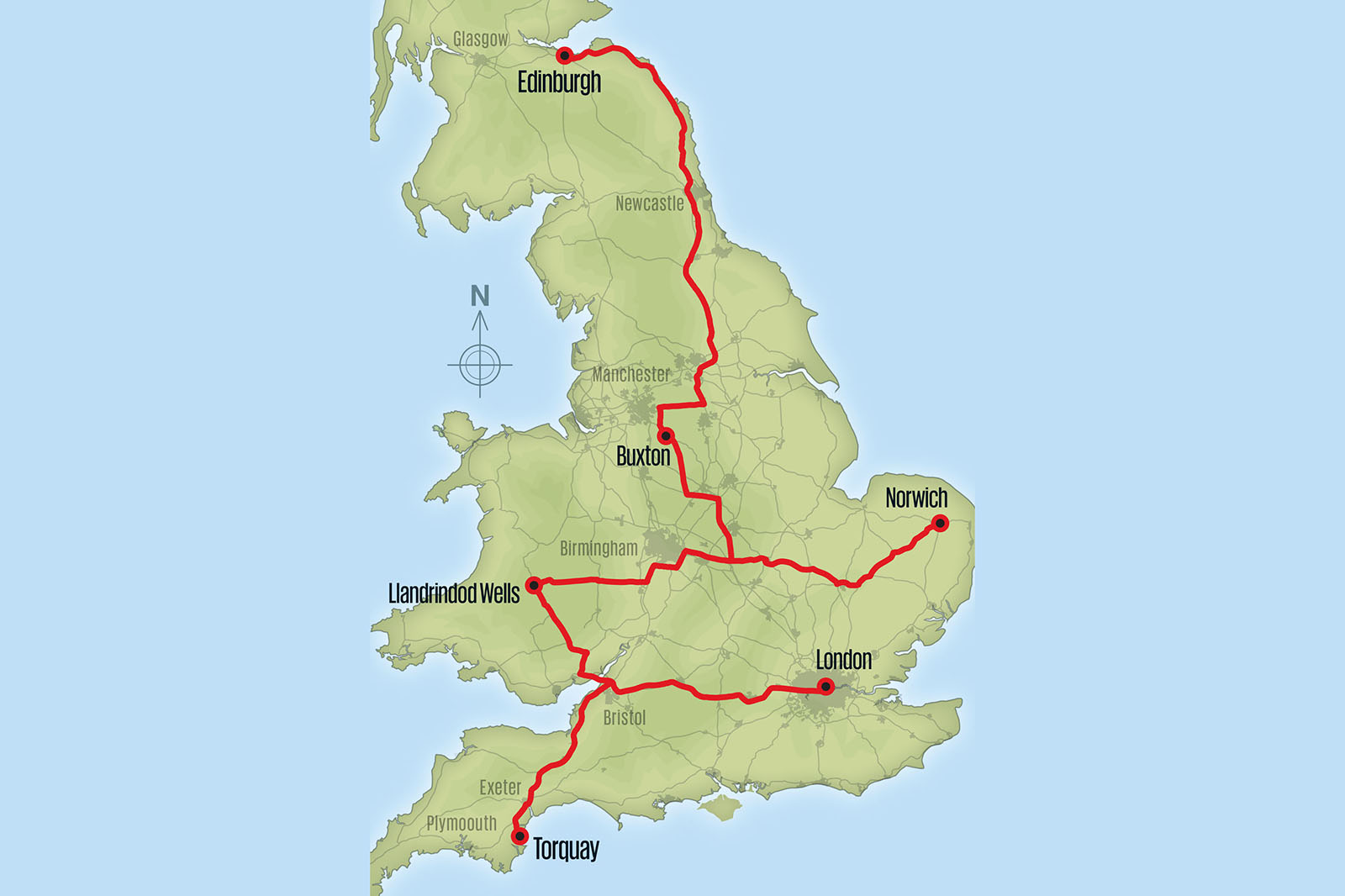
Apropos of absolutely nothing whatsoever, somebody in the Autocar office suggested it would be a smashing idea if a photographer and yours truly recreated the original 1932 RAC Rally route, which totalled 1000 miles over two days. There may be somebody congratulating themselves in the office as we speak. I'm not sure. I haven't been back in yet.
Anyway, depending on your whim, in 1932 you could actually start this new-fangled thing called the RAC Rally – which continues to this very week in different form as the Wales Rally GB – from a number of locations across Britain, then pass through a load of other checkpoints, which would constitute a total route of 1000 miles, or thereabouts.
You could begin from, among other places, London, Liverpool, Harrogate, Leamington and Newcastle, and travel via specific checkpoints – usually at posh hotels, because Mrs Cicely C Grove (2249cc Austin) and the Earl of Brecknock (2810cc Hillman) wouldn't have wanted their cards stamped at any old hovel – on the way to a single finishing post in Torquay (host, apparently, to "scenes of riotous living" at the end).
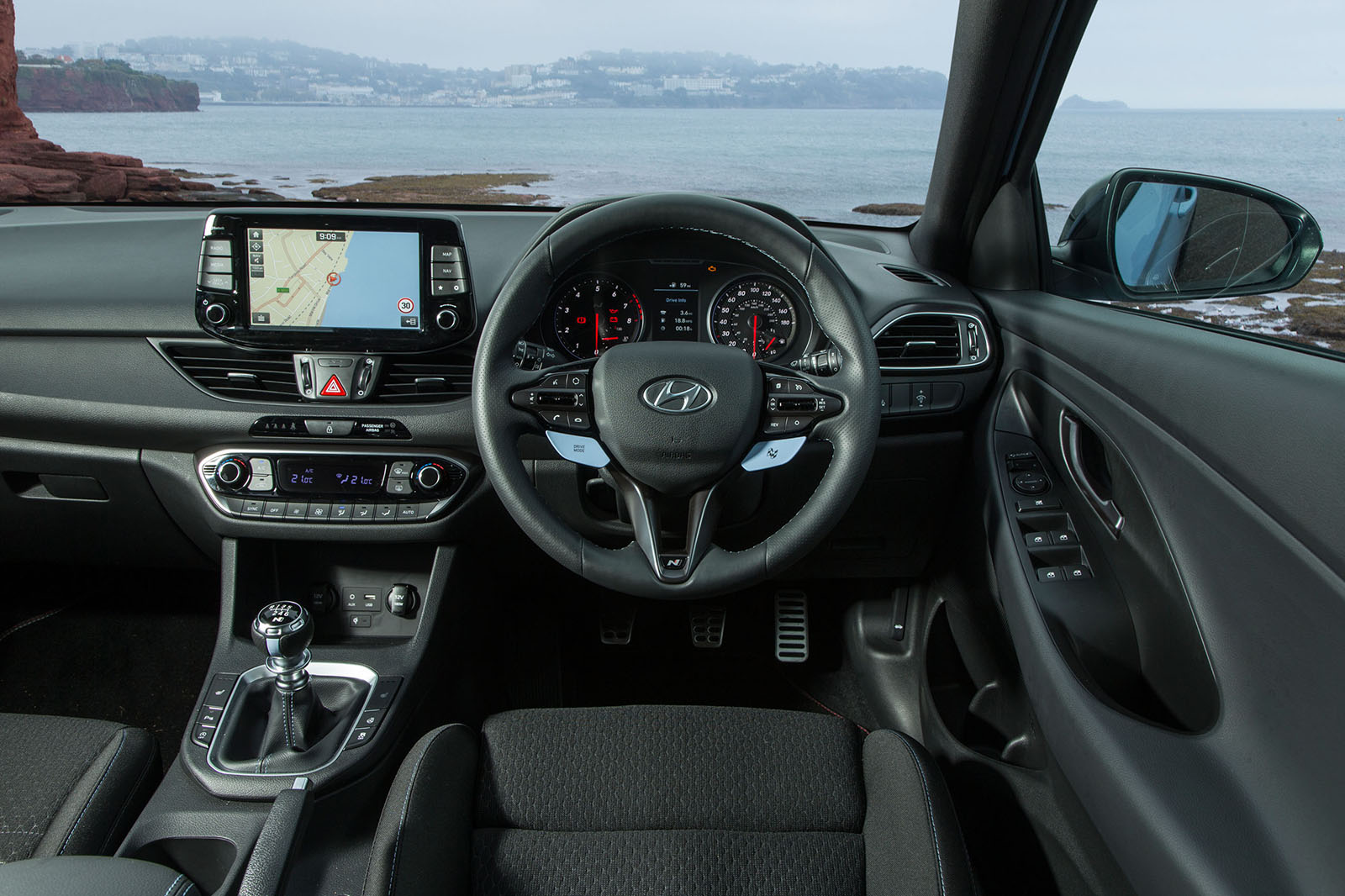
The day after the finish of the 1000-mile rally, there were a series of regularity trials along the seafront road. But of all the starting points, the North British Hotel in Edinburgh – now The Balmoral – was the northernmost. You can guess where the office suggested I should start.
From Edinburgh, then, to Buxton, Norwich, Llandrindod Wells, London and then Torquay, pinging across country like a pinball in a machine on the seafront at the English Riviera.
Perhaps; I suppose we'll see. The timings were a little flexible in 1932 but, if you started in Edinburgh at 12.30pm on Tuesday 1 March, they'd expect you any time after 9.55am on Thursday in Torquay. Which would, officially – given that's about 45 hours for 1000 miles, probably driving alone, in the days before motorways – be going some. You can also guess how much time the office have allocated yours truly. Yes, quite a lot less than that.
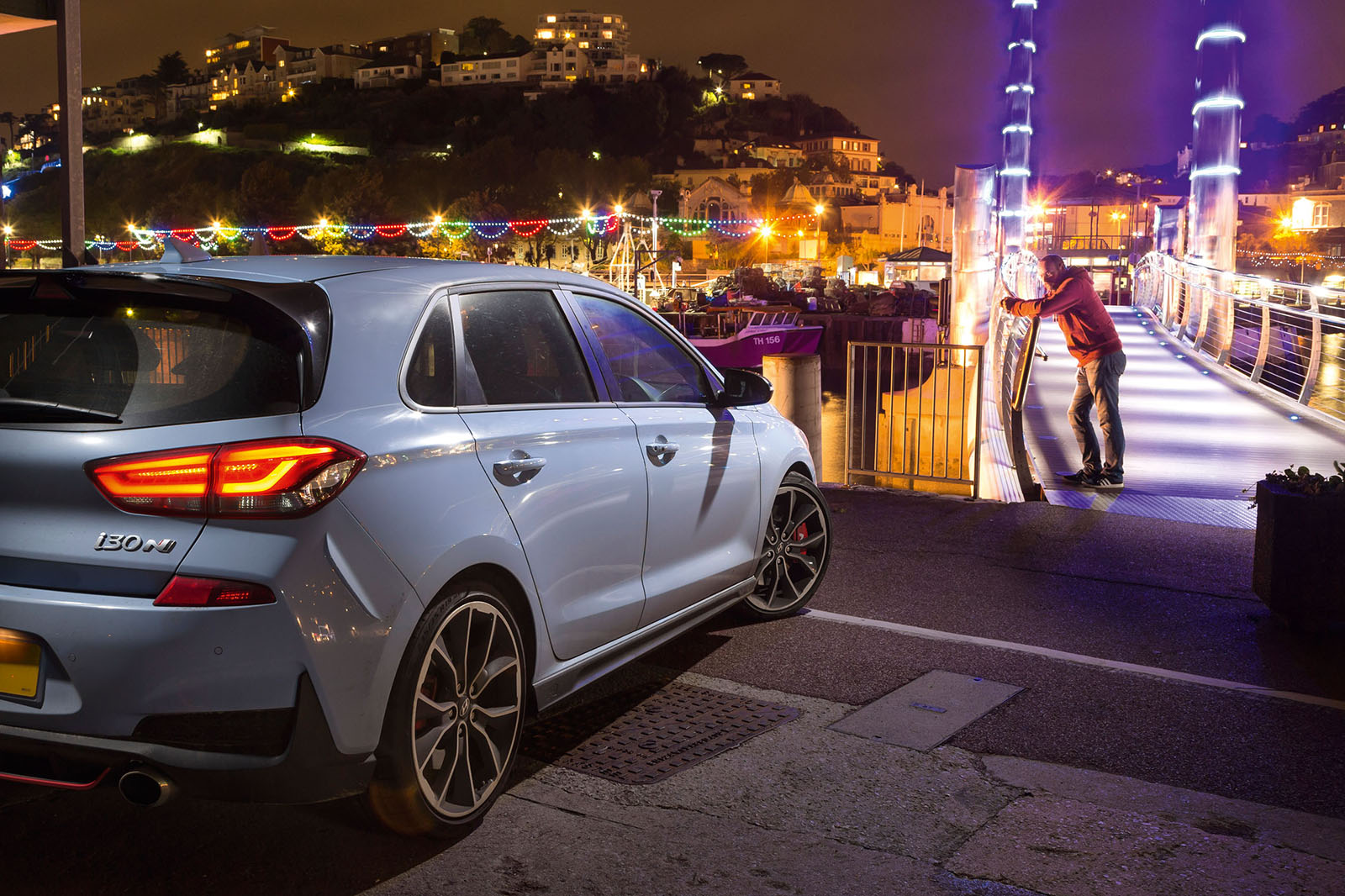
So here we are, Luc Lacey and I, getting a few pictures in the bag once the sun and the tourists have disappeared on a Tuesday evening in Edinburgh. Only, this being Edinburgh, they don't go home very early, so we wait to picture the Hyundai i30 N, which is the vehicle we've chosen for the job.
This is good. I like a road trip as much as the next man, but 1000 miles, via very specific checkpoints, which mean we'll be driving mostly on very straightforward roads (not exactly your North Coast 500 dream trail), for 37 hours over two days is slightly daunting. It's not hard, obviously: it's only holding a steering wheel nearly straight and a right foot largely unmoved. It's not like a real job. But, in 1932, I'd have been braced for adventure. Here, I'm prepped for traffic queues – the worst of the British motorway network – and the greyness of a British autumn, all mixed into a schedule that won't allow time for a cup of tea to brew. The prospect of getting to know an i30 N, then, makes it rather more palatable.
The i30 N is, as you'll know, Hyundai's first 'proper' hot hatchback. You'll find Albert Biermann, in charge of creating Hyundai and Kia's fast cars, here, talking about his other new creation, the Kia Stinger.
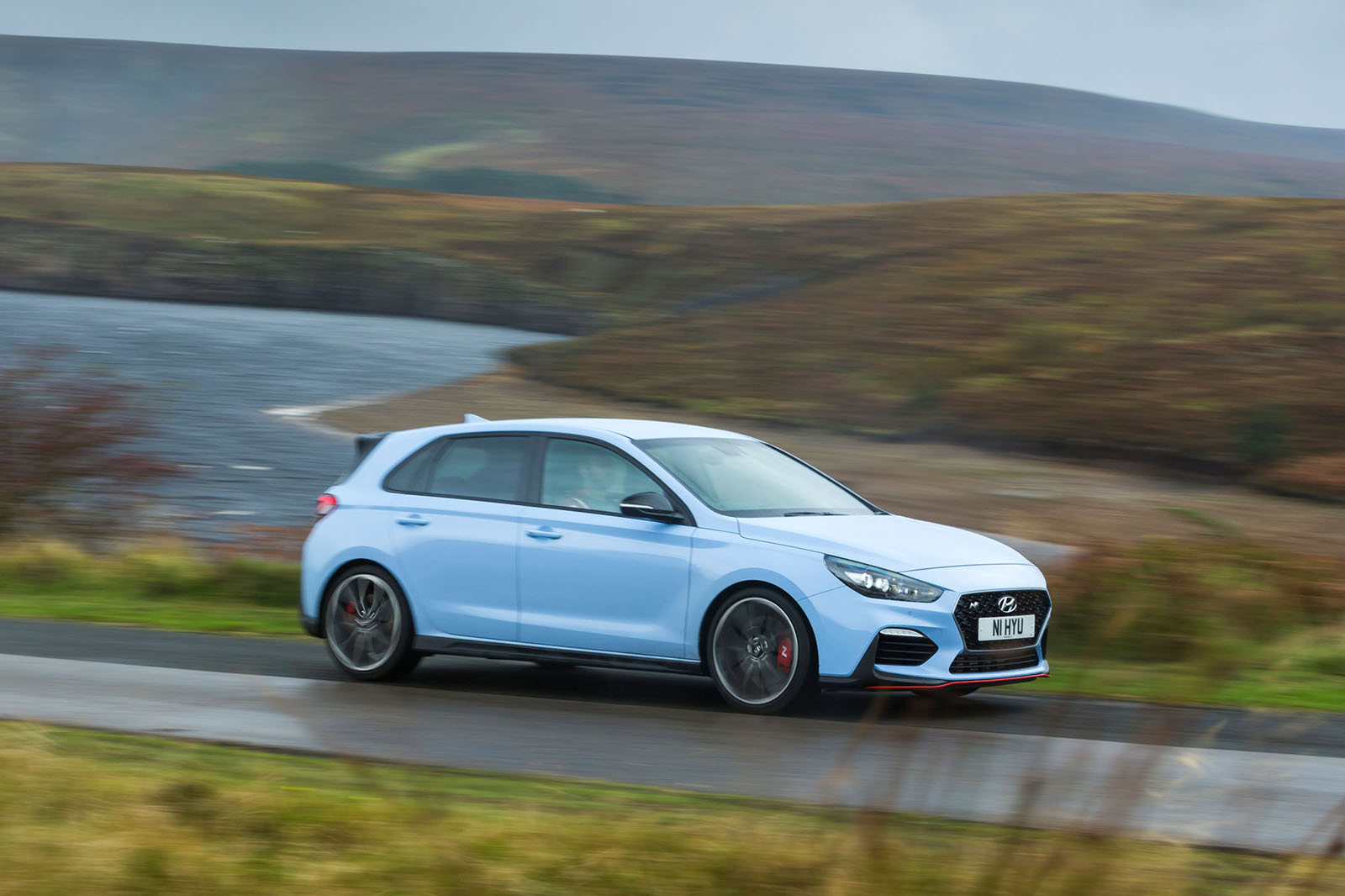
The N sub-brand and Stinger are meant to change the way you think about the group's cars. I've heard from colleagues that the N is very capable.
The other reason it's here is that Hyundai has a full works entry in the World Rally Championship. So hey presto: an RAC Rally recreation, a Wales Rally GB preview, and a brand new Hyundai that's interesting, engaging and relevant to the story. One thousand miles in 37 hours, including photographic stop-starts in... ooh, about five hours' time. Do excuse me. I'm off to bed.
Day one:
Where do you start of a morning like this, when you plumb the route into the nav and it says you've got 1060 miles to drive? Maths is the answer. Because I'm approaching middle age and my waist is exceeding the edge of my jeans, sometimes I use a rowing machine, in a gym. It can be quite boring, and counting the strokes you have to pull, or the number of metres left, makes it no better. I find that if I do maths, try to keep the noodle occupied by calculating how many per cent I've covered, these little achievable chunks of journey pass by more easily. I'm hoping the same will apply here.
Basically, I'll just head south and consider that each 10 miles is just under 1% of the journey covered. Already it sounds quicker, doesn't it? It feels it. We're taking the A1 along the east coast because, although nominally it's longer, of a morning it's pretty marginal and the A1 runs next to the sea, so it's far prettier, which is important to your photographer.
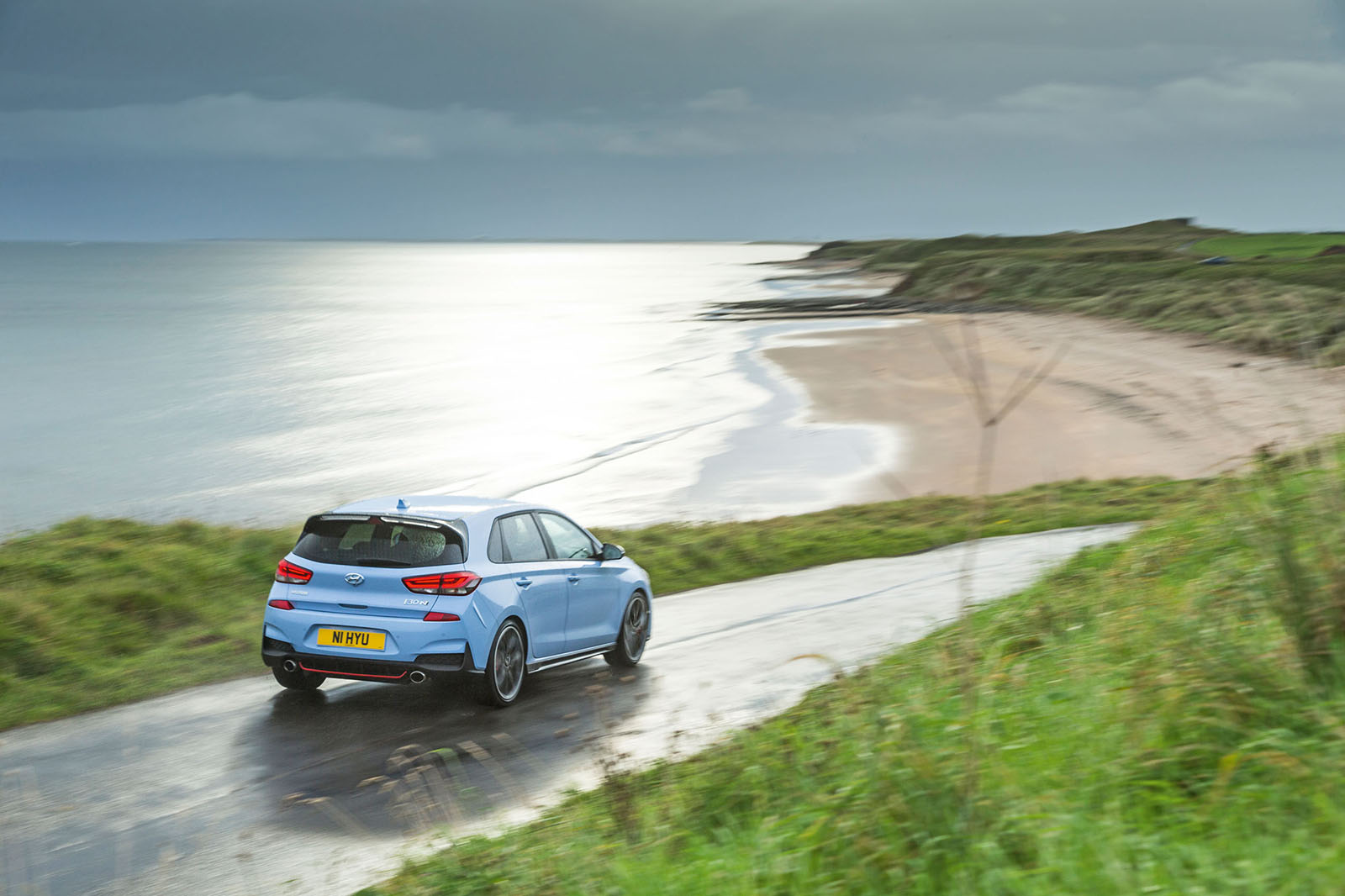
The A1 always feels more like a holiday road than the M1 or M6, too. Not because I holiday in American-themed diners or sex shops, you understand. I think it's because the sea is close. There are names familiar from relaxed weekend breaks: Alnwick, Seahouses, Berwick. It's still well before breakfast when we take a brief stop, and the i30 N is already making life rather easy. It's a good car, this, no question. There are things that Hyundai just gets right, and has done for years. The control weights are easy, ergonomically it's sound. The driving seat drops lower than in a Ford Focus ST, the steering wheel adjusts well. It still doesn't quite match a Volkswagen Golf GTI for driver comfort and adjustability, but it's probably the next best thing in the class. And whether you're doing 500 miles a day or 500 miles a month, this sort of thing matters.
"When the body is relaxed, the mind will go faster." I think that was the strapline in an old ad for one of the mildly less crippling supersports motorbikes, but I believe it with cars. And the i30 N has it reasonably well nailed. Pity, really, that its throttle and brake pedals aren't slightly closer, to let you heel-and-toe without a mammoth ankle twist, but you can't have everything. It will rev match for you if you like but, given there's a six-speed manual gearbox, 2.0-litre turbocharged engine and a limited-slip differential, I prefer to do it old-school style myself.
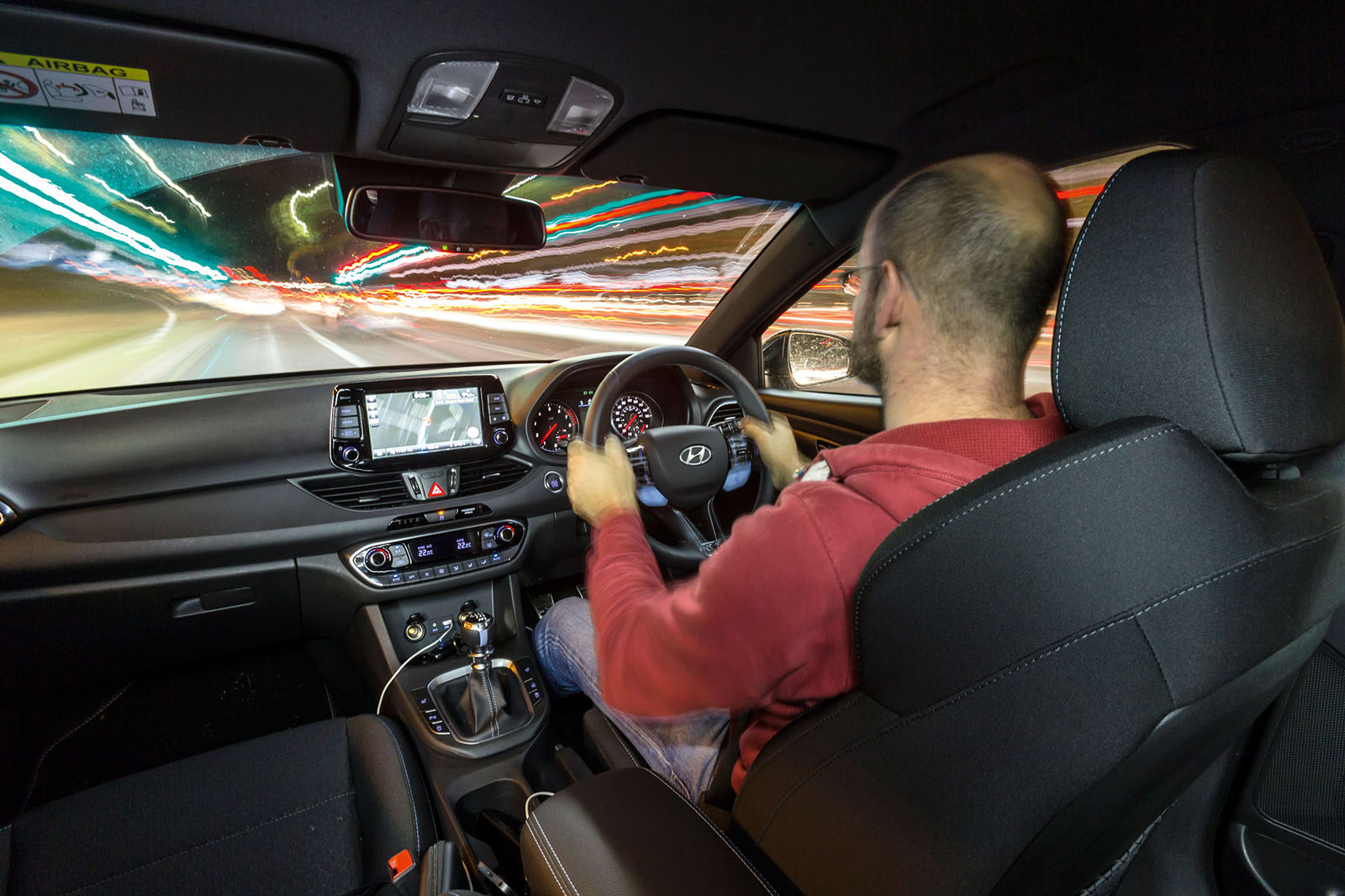
Elsewhere, it's hard to pick too many holes in the interior of a car that starts at under £25,000. This one's £27,995 because it's the Performance Package variant, which means it has 271bhp rather than 247bhp and slightly more serious suspension.
A couple of the buttons on the steering wheel can adjust the suspension, steering weight, engine response, gearbox sound and so on. And one of these drive modes is a customisable one, so you can do what I find I'm always inclined to do on UK roads: slacken off the suspension, lighten the steering, but leave the engine and exhaust in their louder modes. It's the one that works best in Britain, I've decided, by the time we reach Buxton. It's gone lunchtime already; and, unlike in 1932, every time we stop, there's a mini photoshoot to complete, so it's not a case of having your card stamped and getting on your way.
Still, we've got satellite navigation (not poor paper maps and few road signs), a supposedly better road network, certainly easier access to poncey coffees and 271bhp. So after a few quick snaps at the Palace Hotel, we head out into the Peak District and stop for yet more pics.
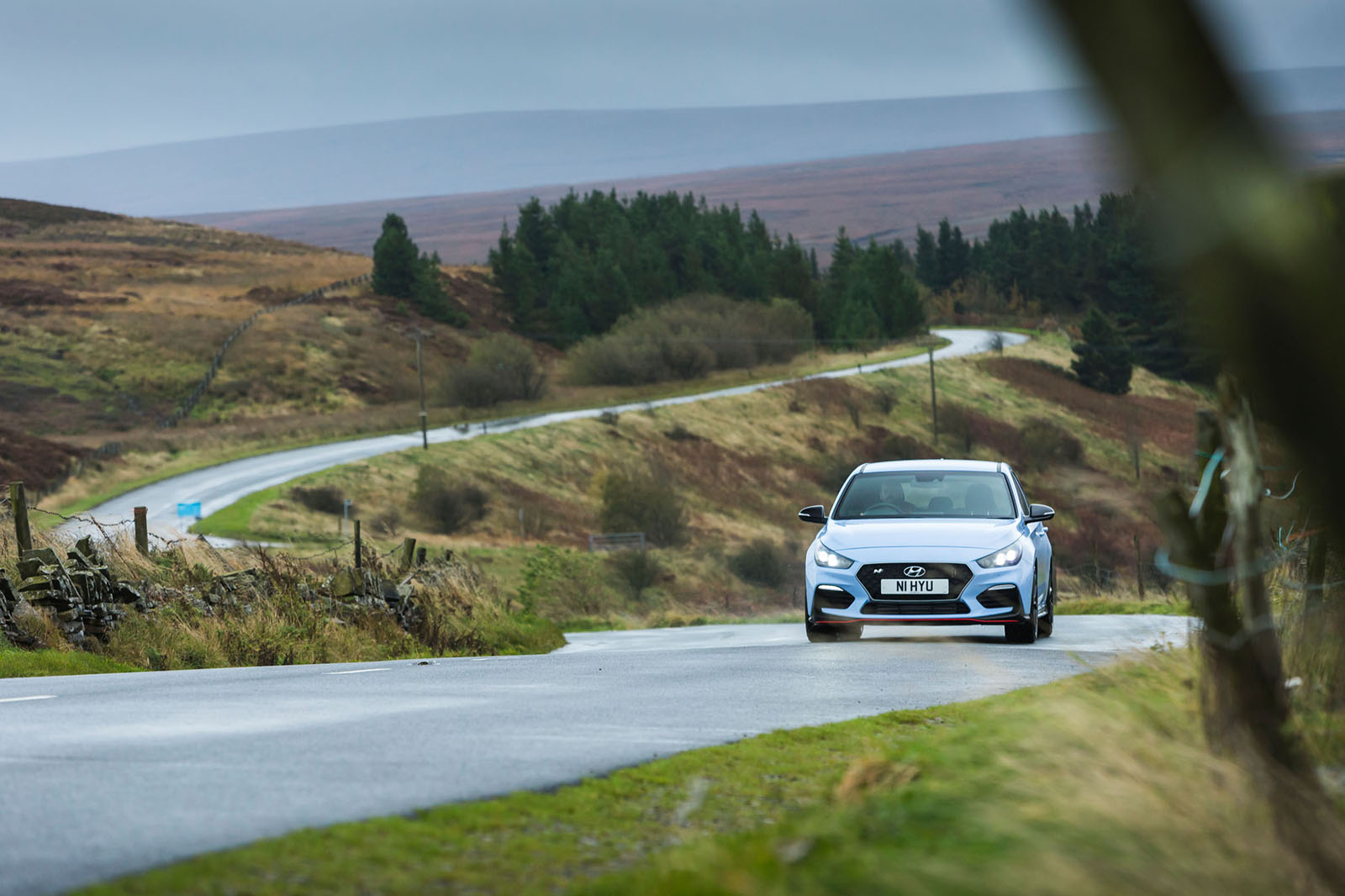
They're the reason we won't get to Norwich until 10pm, which is pretty well behind schedule but driving in the Peaks is also why I don't really care. I suspect the best roads we'll find are here, and I want to know what the i30 N is like.
Seriously good, is the answer. Even in the easiest-breathing suspension setting, body control is terrific, there's good grip and sound traction. The N steers with precision and response and, if the chassis is a touch less agile than, say, the just-departed Renaultsport Mégane, and although there's less adjustability than a Ford Focus ST, it's still terrifically engaging and rewarding.
So we are late leaving the area and therefore stuck in afternoon traffic in the Midlands, and late getting to the Maids Head Hotel in Norwich.
It, like the Palace Hotel in Buxton, bears the same name as when they were checkpoints in 1932. Bits of this hotel date back to the 12th century. Sensibly, we'd stay here, but today apparently doesn't feel quite Alan Partridgesque enough yet, so we drive past myriad roadside hotels until one sucks us in.
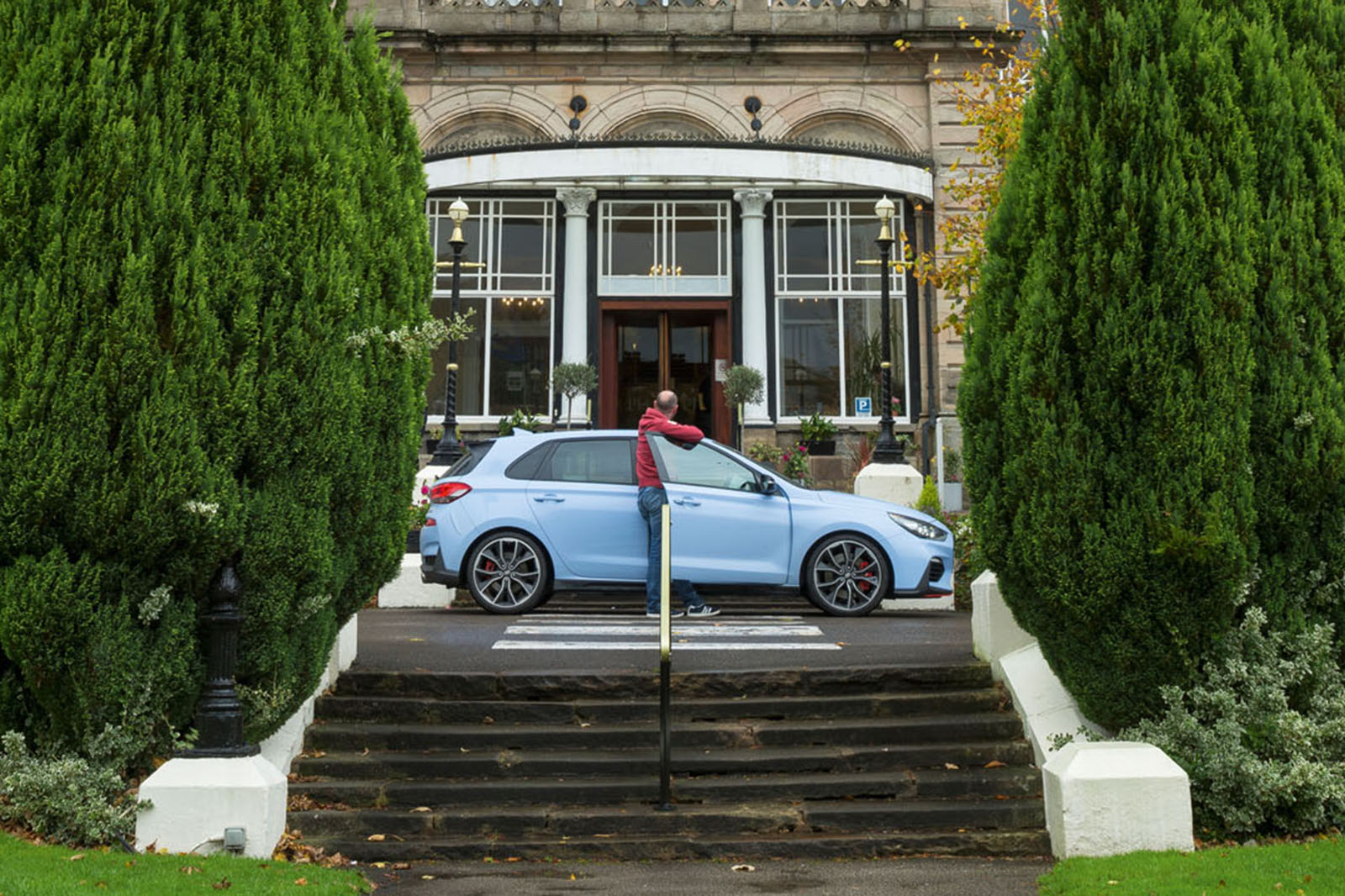
Day two:
I love a road trip, but I'm apprehensive today. London? Late afternoon? But first, what's this? The road from our overnight in Coventry to Llandrindod Wells, if you go through Tenbury Wells and Presteigne, is actually a very tidy driving route, in places. Praise be. The old Pump House Hotel in Llandrindod has gone, replaced by council offices, but the pump house itself remains, so we get our shoot nailed and then head to London.
I think the traffic will be interminable. I know it will be. We're headed to where the Rootes Group Service Station was on St John's Wood Road, which in 1932 was right opposite Lord's cricket ground. It's not there any more because that side of the road is lined with flats, but we go, because we must, even though I know it'll take an age.
On the way in, we cross the M25 at around 2.30pm but, despite only stopping for a few minutes when we get into town, we don't pass the M25 on the way back until 5:45pm.
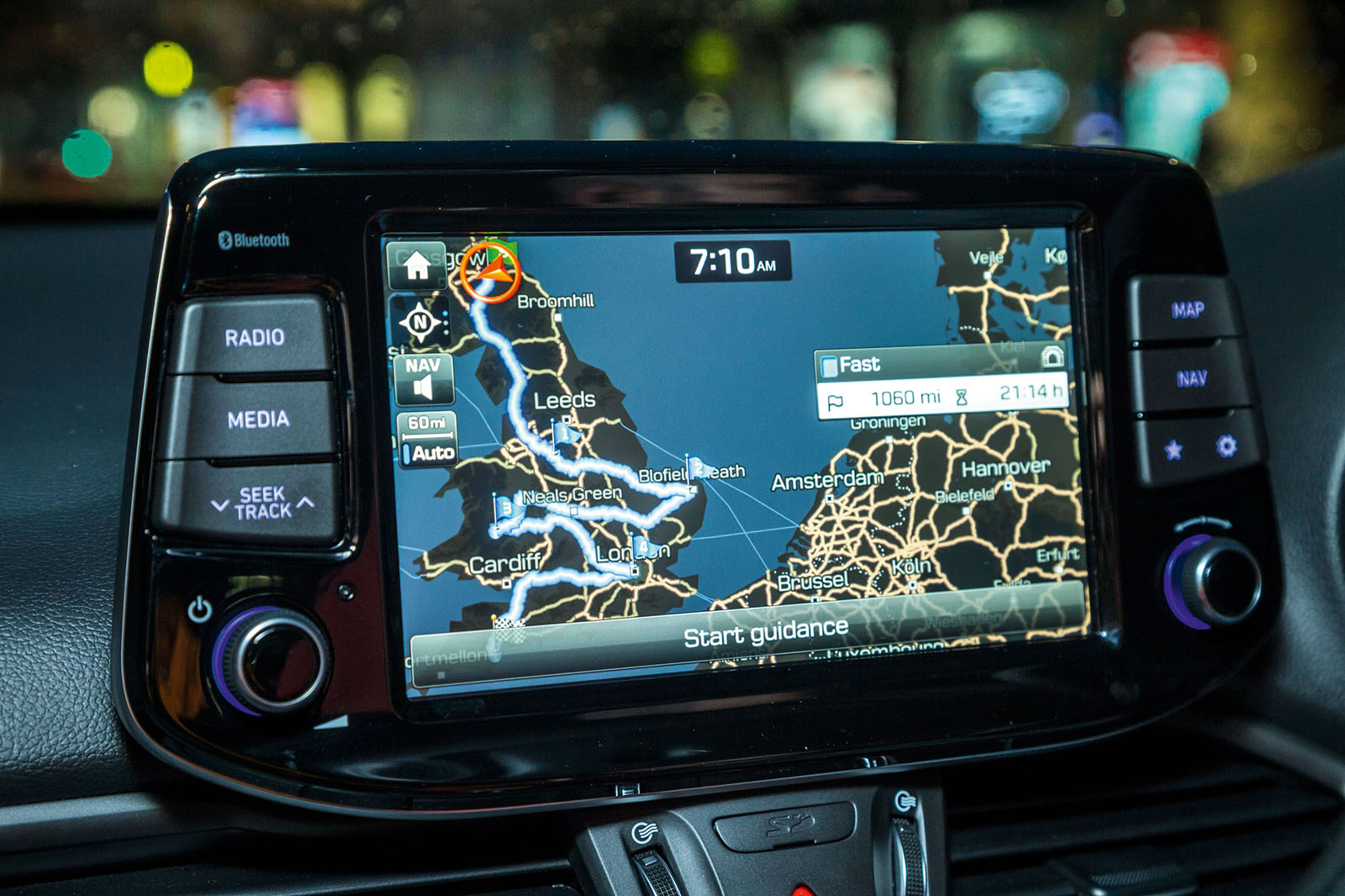
I think the traffic will be interminable. I know it will be. We're headed to where the Rootes Group Service Station was on St John's Wood Road, which in 1932 was right opposite Lord's cricket ground. It's not there any more because that side of the road is lined with flats, but we go, because we must, even though I know it'll take an age.
Then it's more or less arrow straight to Torquay apart from a few junctions: M4, M5. It's dark but the end is in sight, and the i30 N is a decent motorway car too. It's not where the i30 impresses most but is, let's face it, where it'll spend large amounts of time. The ride is composed, noise are levels low, the audio and infotainment are below best in class but bearable.
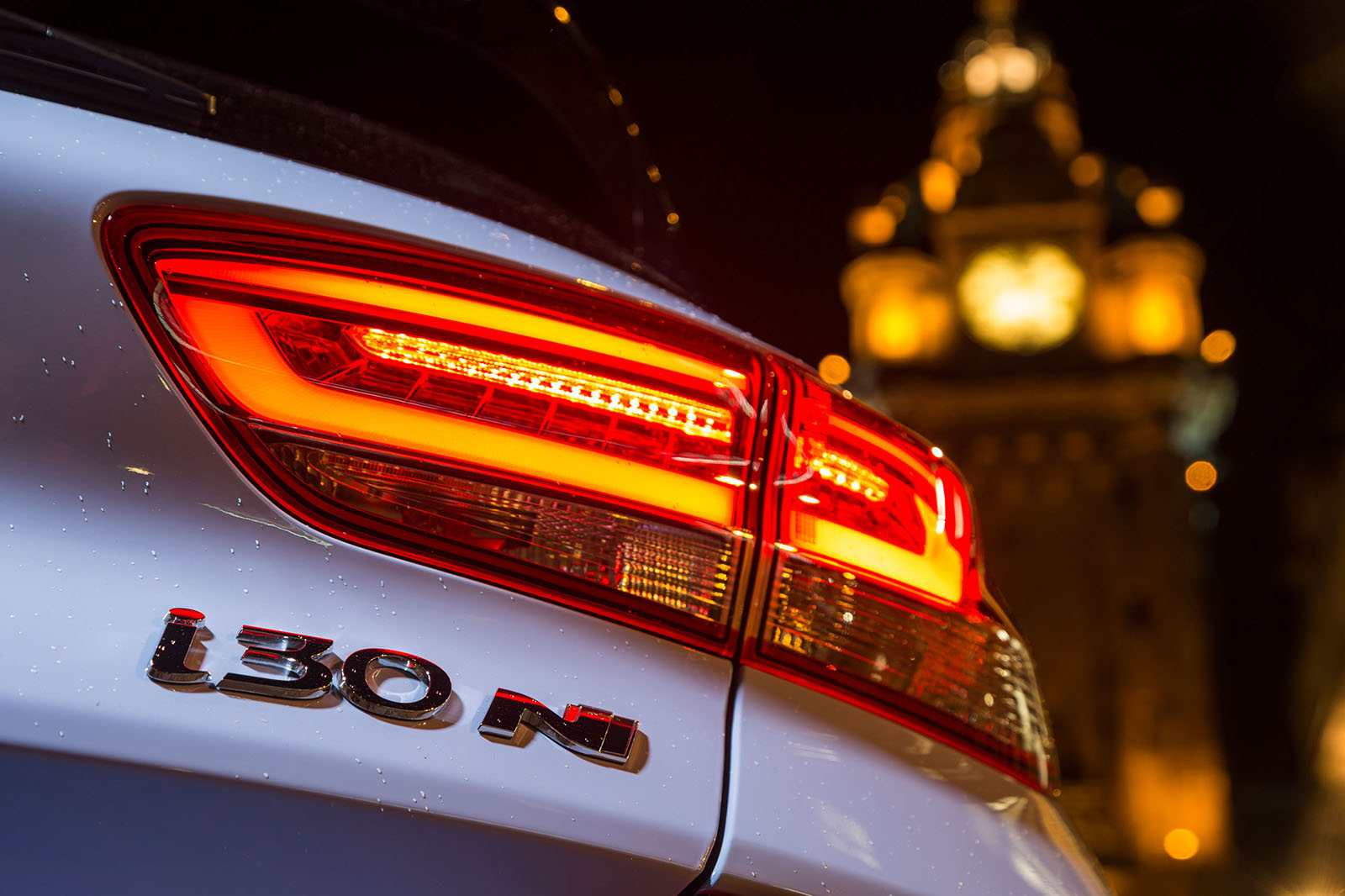
On coming off the motorway, there's a short few bits of dual carriageway, a few roundabouts to enjoy and we're into Torquay at around 9pm: with pictures and detours, 1145 miles covered, at 32mpg, in a little over 30 hours, not including our overnight stop but including all the other faffing.
We head to the seafront for a final photoshoot and some "riotous living". There isn't much of that going on, so we go to the arcades; I fail to win a sloth and so become one for the next eight hours instead. Unlike 1932, there's a bit less adventure to driving the length of England plus a bit these days, I'm afraid. Though the cars are rather better.
What to expect from Wales rally GB:
Volkswagen's shock withdrawal ahead of this season was a blow to the World Rally Championship – but it has also made things far more competitive.
Well, sort of. Triple champion Sébastien Ogier, driving for the privateer M-Sport Ford Fiesta WRC team, has a big points lead thanks to two wins and a string of consistent finishes, and can clinch the title at the Wales Rally GB this week.
Despite his lead, it's been an open season, with six winners from 11 rounds. Hyundai's Thierry Neuville has been arguably the fastest driver, but his three wins have been accompanied by crashes and problems in his i20 WRC.
Two definitely worth watching will be the UK drivers. Northern Ireland's Kris Meeke triumphed on the last round in Spain after a difficult spell in his Citroën C3 WRC, while Welshman Elfyn Evans (M-Sport Ford) came agonisingly close to his first win in Argentina and could star on his local stages.
How the RAC Rally began:
The Autocar, as it was known then, was at the heart of the creation of the first RAC Rally. Inspired by the popularity of the Monte Carlo Rally, a group of British drivers (including a director of this very publication) who regularly took part in that event came up with the idea of a similar event to promote the joys of the English Riviera.
Autocar sent a representative to Torquay and then suggested the idea to the Royal Automobile Club, which enthusiastically took on organisation for the inaugural event on 1-4 March 1932. Nine start points around the UK were chosen, each following a 1000-mile route to Torquay, with the crews of the 349 starters hopefully arriving on Thursday 3 March, in time for a tea reception held by the mayor at the Medical Baths. The event concluded the following day with a series of driving tests: running as slowly as possible in top gear for 100 yards, an acceleration test and a brake test.
Amusingly, it was the slow-running test that proved decisive, with Colonel AH Loughborough taking the £25 cash prize and the Autocar Trophy.
Related stories:
BMW X5 review
Hyundai i30 N review
BMW M3 review